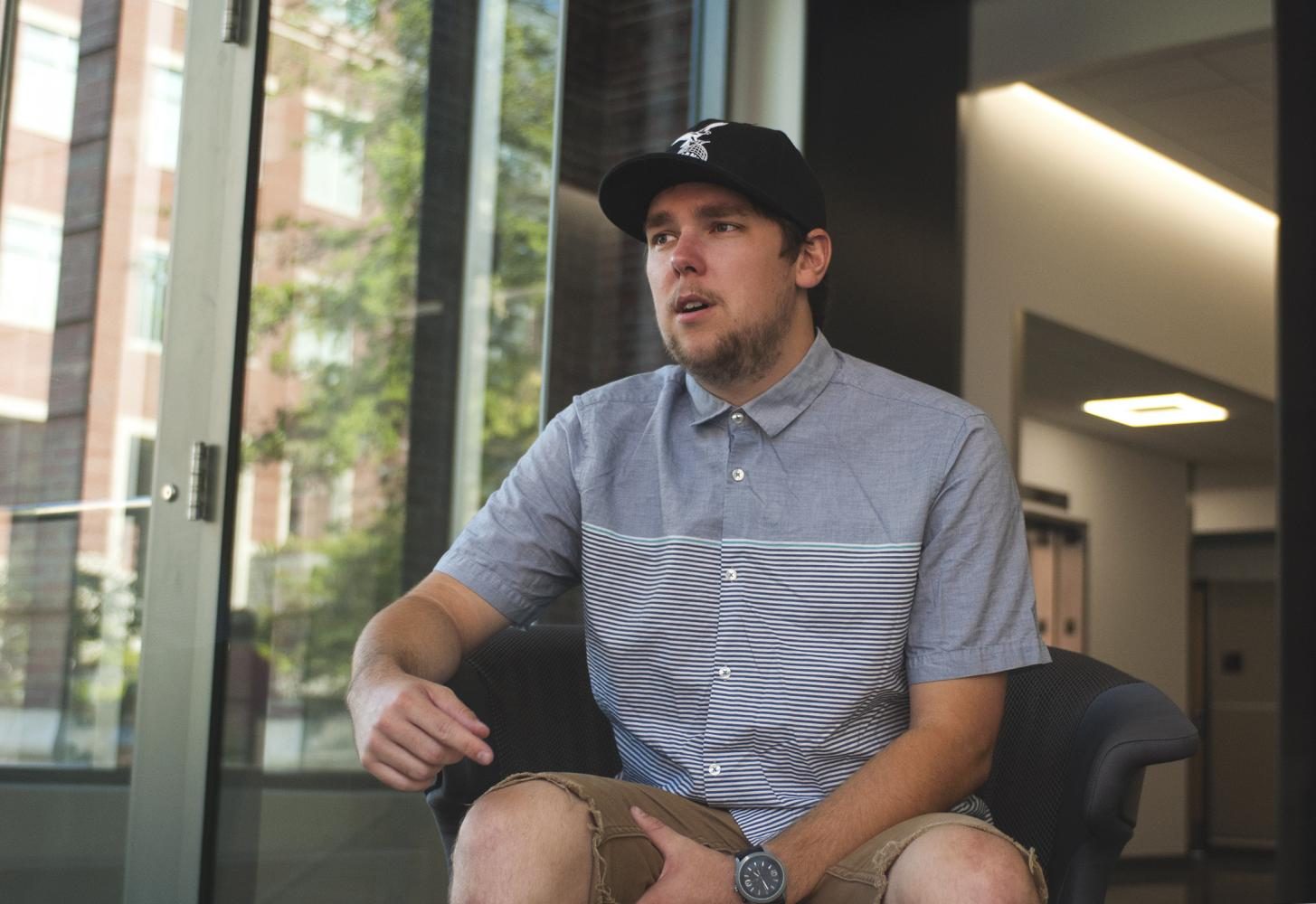WSU students use social media to cover college costs
Two students used social media to generate the funds to cover school expenses
JONI COBARRUBIAS | The Daily Evergreen
Tucker Roberts, junior, discusses how Facebook is his best tool for GoFundMe.
September 5, 2017
Getting a job, selling a few of your possessions or applying for scholarships are the most common approaches to lessening the burden of tuition.
According to a report by College Board, the cost of college has increased over the years beyond the level of inflation. Forgoing the usual strategies to pay for college and school expenses, several WSU students have utilized their digital media skills to pay for their educations.
Tucker Roberts, a junior architecture studies major, took on this expensive challenge with some classmates.
The summer before Roberts’ junior year, he and eight friends enrolled in an architecture summer class in Seattle. They decided to save money by sharing a two-bedroom, one-bathroom apartment.
Roberts explained how everything was going well, and the only struggle was finding enough money to fill their community fridge to satisfy nine residents. They decided to bring this issue to the public and ask for help on Facebook.
“It was a collective decision to make the GoFundMe page on Facebook to support our living expenses,” Roberts said.
Family and friends quickly responded to this post, and Roberts said he was surprised by all the support.
The group’s goal was to raise $2,000, and the result added up to about $1,100. With that much, the group was able to put food on the table and have a little extra for fun things, like baseball games.
Tim Davison, a WSU graduate student, took a different approach. He used his talent in design work to cover his expenses.
He was involved in the Army ROTC, he said, so it was hard to fit a conventional job into his already hectic schedule. The program sparked his interest and support for law-enforcement, which inspired his graphic design business.
He started playing around in Photoshop, he said, and created designs that he would eventually post to Facebook on his law-enforcement officer support page. Davison’s designs grabbed a lot of attention from the public.
“Originally, I had no plans of doing design work for money,” he said. “I just enjoyed throwing together designs, and then realized I could get support out via apparel.”
As he sold $20 T-shirts and $5 stickers, this became a way to put himself through college and support his journey through law-enforcement training.
“It’s a fun hobby,” Davison said. “I love the bond and friendships I’ve made because of law enforcement and design stuff.”
This story has been updated from its previous version.





















